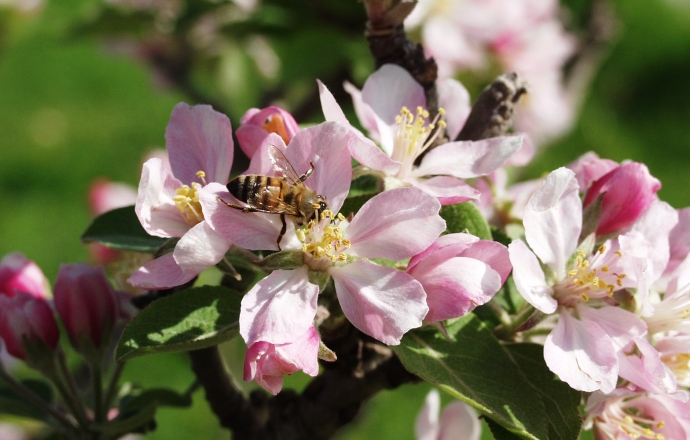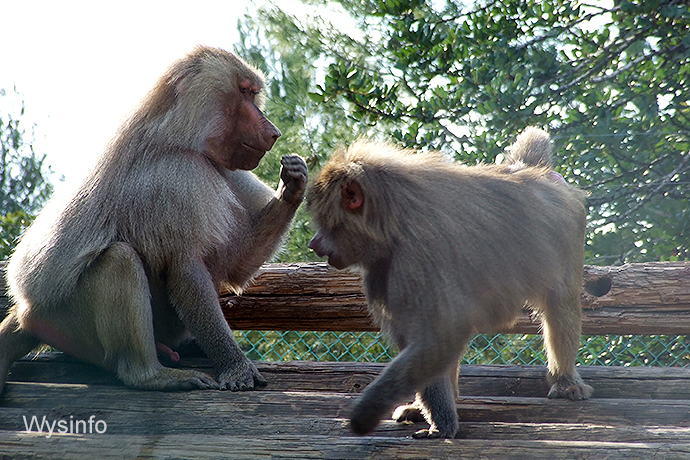Page Content
- What is Smell?
- How do We Smell
- How Does Smell Affect Us?
- What are Pheromones?
- The Smell of Humans
- Pheromones in Perfume
What is Smell?
Smell — one of the five senses —
is the sense that allows us, with the help of organs in our nose and a process of memory and associations in our brain, to recognize our world and to understand and adapt to our environment.

It tells us what we like and dislike;
it tells us with whom to fall in love.
It stimulates our appetite and enriches our eating experience.
It triggers memories and affects our moods.
The lack of it might endanger our lives or leave us in state of depression.

How Do We Smell?
Smell is, on one hand, common to everyone and, at the same time, very personal.
While one person might like one smell another might despise it. This is because even though the trigger to each unique scent originates from specific molecules that reach the nose – our experience of smell is located in our brain.
When we breathe in, the air flows through our nostrils, enters the nasal passages and is passed into our nasal cavity. The air then moves down the back of our throat through the trachea (in other words, through our windpipe) on its way to the lungs.
Inside the nose we have hair, some of which is microscopic in size (called cilia), and a thin layer of tissue that is actually a membrane that generates mucus.
This membrane helps to moisten the air, to warm it and to catch germs, dust and other small particles that could otherwise end in our lungs. The role of the cilia is to move the mucus out of the sinuses and “brush it out”, to the back of the nose.
On the top of the nasal cavity is the olfactory epithelium. In human beings it contains more than 10 million small receptors that are sensitive to odor molecules that float in the air.
There are hundreds of different types of odor receptors, each with the ability to sense certain odor molecules. Odor molecules can stimulate several different kinds of receptors.
Illustrations by Elad Tzadok
When the smell receptors are stimulated, signals travel along the olfactory nerve to the olfactory bulb which is situated just above the nasal cavity and beneath the brain. Signals are sent from the olfactory bulb directly to the brain to be interpreted as a smell.
The variation and combination of stimulated receptors trigger different signals that are interpreted in our brain, thus allowing our brain to recognize some 10,000 different smells. Compared to other animals this is quite low.
Dogs, for example, have about 200 million olfactory receptors. They are able to sniff a trail of a person days after they leave. This makes them more sensitive to smell particles in the air than humans. This is why dogs are used as odor detectors by officials around the world in the war against crime and terror.

Dogs have about 200 million olfactory receptors
There is no absolute or objective analytical way to measure odor scientifically since each person’s brain gets slightly different signals and reacts differently to them due to different experiences and memories.
Because of the complexity of the system of triggers, there are currently only theories as to how the olfactory receptors actually work:
- Vibration Theory: The receptors react and detect the unique frequency and vibration within the molecule which triggers the electric pulse to the brain.
- Shape Theory: The scent molecules lock into olfactory receptors, based on their shape alone. This theory suggests that there is a unique relation between a type of receptor, a type of molecule shape and a specific smell. Each receptor releases an electrical pulse to the brain, which in turn triggers a specific emotional sensation (a specific scent).
- Odotope Theory: This is an elaboration of the shape theory which argues that smell is the result of a combination of receptors. In this theory receptors provide small bits of information to the brain which pieces these bits of information together like a puzzle to create an overall sensation of smell.

How Does Smell Affect Us?
Currently it is believed that an average human can distinguish between an astonishing 10,000 distinct scents. Yet those same 10,000 fragrances cause completely different experiences and reactions from person to person, and can be different for the same person based on that person’s emotional level.Our olfactory receptors that send electrical signals to the brain are connected to the limbic system, the most primordial and primitive part of the brain, which is associated with emotions and memory, linking our experience and overall sensation of a smell to our most basic personal emotional core.
Studies tend to show a connection between exposure to pleasant fragrances and positive emotional change. For instance, a person who is exposed to a pleasant fragrance will have an elevated mood, as opposed to those who were exposed to a placebo.In addition it is more likely that people who are exposed to pleasant scents will be deemed attractive by other people than people exposed to scents that were considered to be unpleasant. This is a result of the affect that the scent had on the person’s mood rather than the affect on the people surrounding that person. Some psychology experiments have even suggested that the real value of perfume might be to affect the mood of the wearer rather than the attraction it has for the opposite sex.
What are Pheromones?
The term pheromone is derived from the Greek word “pherein” (to transport) and the word “hormon” (to stimulate).
Hormones are molecules that are created by the endocrine system. They transport signals inside an organism, serving like messengers that send orders for the biological activity of the body.
Pheromones are molecule scents created by various organs of the body and are secreted from it through the secretory organs. They float in the air and are used by animals and other life forms, with the aid of the olfactory system, to communicate mostly within their own species.
Pheromones can be classified into a few categories by the function they serve. A rough division will leave us with three groups:

- Pheromones that carry with them a distinct olfactory stamp of an individual or a group, thus enabling them to be recognized or identified by others.
It is owing to this type of pheromones that a mother recognizes her baby (and the baby recognizes its mother) a few hours after birth, the buffalo recognizes it’s new born among thousands, the ants identify their trail and the dogs and other animals define their territory.


- Alert Pheromones – these are generated by creatures or even plants in a case of danger. These pheromones can also be recognized by different species thus allowing them to respond by confronting the danger or by escaping from it.

- Sex Pheromones – These pheromones play a main role in the synchronization of the fecundation and ovulation in sea life and also in mammals. At the time of ovulation, the female creates pheromones that trigger the male passion for sexual behavior. This can be seen with horses, dogs, monkeys and many other animals.
The sex pheromones are the scent molecules that creatures release in order to attract the opposite sex. In some instances, like in the Lepidoptera (moth and butterfly families), the female sex hormone can be detected by the males from a distance of up to 10 km.

Do humans have such pheromones and do we react to them? There is some dispute about this.
The Smell of Humans
It is a known fact that each of us emits our own unique smell (unless we have an identical twin) and in most cases we don’t even notice it since we become accustomed to it.

Scents affect our mood 
Each person has a unique smell
In fact our body smell reflects our physiological state and inner metabolism, our diet, our gender, reproductive phase, and our health. In some cases certain types of diseases can make us produce smells characteristic of that disease. For example, people with liver disease can have a fishy smell on their breath.
Even though most humans usually don’t notice, scents can affect our mood and in turn affect the smells we release. Yet compared to some animals our detection levels are substantially low.

Research has shown that the sense of olfaction is stronger in women than in men. It reaches its peak around the time of ovulation and at this time it is significantly stronger than during other phases of the menstrual cycle.
There is a gene family (called the Major Histocompatibility Complex – MHC) which is found in most vertebrates that plays an important role in the immune system and in the selection of mates. This group of genes generates molecules that can be detected by the sense of smell. Research has indicated that we tend to select mates with different MHC genes, thereby ensuring a healthier breeding pattern.
Pheromones in Perfume
Although pheromones were discovered in the 1950s, the use of them in perfume goes back to ancient periods. Natural pheromones, which are produced by a few animals and by bees, were used as a base that was mixed with jasmine, vanilla and other perfume plants.
Bee’s wax, for example, absorbs the aroma of the honey, propolis and pheromone molecules that were generated by the bees.Wax from different bee hives smells differently depending on its location and the group of bees that produced it. The essence of the wax is extracted by the aid of alcohol.
Ambergris is a pheromone produced by the sperm whale which is a marine mammal of the whale family. It was hunted, among other things, for its ambergris, although there was no need for it since this substance grows like a football in its stomach and is naturally regurgitated from it. The ambergris floats in the ocean and can reach the shores of Somalia, Mauritania and India where it can be collected. This pheromone has a sweet earthy odor and was used, historically, in the production of perfume.
Pheromones from civet, wild beaver, hyrax and a few other animals also were extracted for the production of perfume.
Today, the very high price and scarcity of these scents make their use in mass production of perfume nearly impossible. Technology has brought with it the development of synthetic substitutes. They are cheap, readily available and while commonly used they are a poor imitation of the original animal pheromones.




